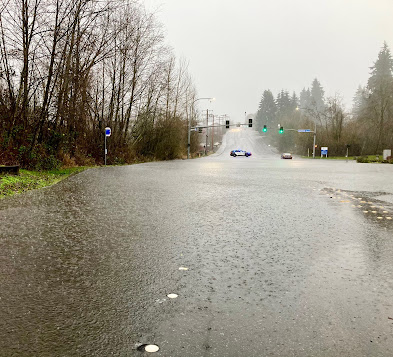Many of you in western Washington are going to see snowflakes tomorrow.
But there is going to a huge variation from flurries to several inches.
The mountains and foothills are going to get hit hard and the snow-level will be low.
This is a very complex, marginal event with the potential for some surprises. But like the COVID-19 vaccines, scientists/forecasts have better tools than even a few years ago.
Not this much.
Before I go into detail, let me give you the bottom line for the Monday snow situation.
Temperatures will be marginal for snow, but where there is sufficient precipitation, snow will reach the surface. The northeast Olympic Peninsula will be hit hard by 2-12 inches and snow will increase to several inches quickly in the Cascade foothills. Elevations above 200 ft and away from the water could get a dusting to an inch.
There is the potential threat of a localized convergence zone that could set up in central Puget Sound that could lay down several inches.
The situation
The models are all pretty much in agreement about the key aspects of the weather pattern tomorrow.
As shown in the surface weather forecast for Monday at 7 AM, a low pressure center will reach the central WA coast at that time (the solid lines are isobars, lines of constant pressure). The shading shows low-level temps, indicating cool air (blue) to the north and northwest. Low level winds are also displayed. This pattern will allow a surge of cooler air to push through the Fraser River Valley and jet southward into the Olympics, producing an upslope snow band.
The low center will then push across the Cascades and cool air will move southward behind it. Marginal for snow near the water and where precipitation intensities are light. And sometime dangerous could happen at the leading edge of the southward-bound cool air within the Sound.
Let me show you the accumulated SNOWFALL from the UW WRF. SNOWDEPTH will be MUCH LESS because the ground is warm.
Here is the total snowfall from this morning through 7AM tomorrow. At this point, northeasterly winds approaching the Olympics have started the snow event there.
By 1 PM, the northeast Olympics slopes have been hit hard, with up to a foot back from the water. If you live in Port Angeles or Sequim, be ready for this, particularly if you live away from the Strait. More moderate snow (dusting to an inch) could fall over the San Juans and around Bellingham.
And now it becomes showtime for Puget Sound.
Cooler, northerly (from the north) air will move southward into western Washington and air aloft will turn to the northwest. Cool, upslope flow will drive the freezing level down over the Cascade foothills, with several inches of snow down to around 750-1000 ft and perhaps a bit lower. Very light snow will extend towards the Sound, but switch mainly to rain near the water and sea level. The snow total map through 7 PM shows the situation.
But here is a danger here, one that some recent model simulations have suggested.
That if a convergence zone sets up between the northerlies moving down the Sound and southerlies coming around the Olympics, a snowband--dropping several inches-- could set up. Here is an example of it from the latest NWS GFS model for the 6-h snowfall ending 7 PM tomorrow. I will be watching the next series of runs carefully to see if this looks probable.
Finally, as I have "trained" all of you... one ALWAYS needs to look at uncertainty--which means considering ensembles of many different forecasts. For example, the UW high-resolution ensemble shows a lot of uncertainty for snow at SeaTac, but most forecast members have something (the mean--black line--is around 1 inch)
Keep in mind that the ground is warm and air temperatures are NOT forecast to go below freezing....that will be protective of the streets unless the snow comes down too fast for melting. The latest Seattle SNOWWATCH map shows road temperatures in the upper 40s to 50F (see below).
This is going to be interesting.

























































